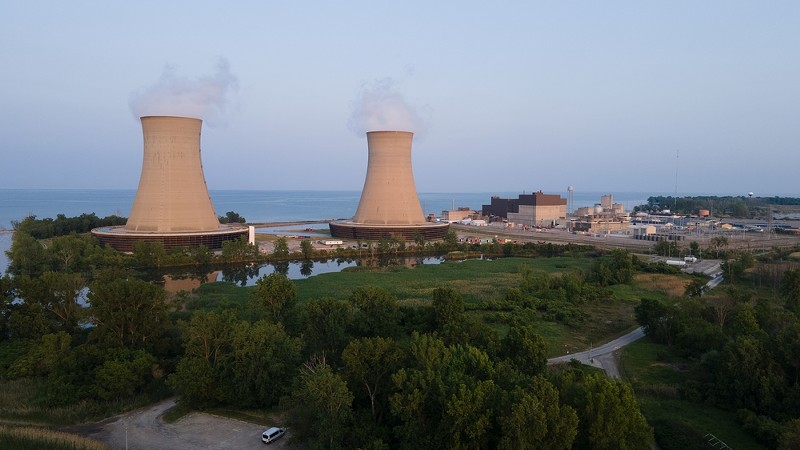 US DTE Energy has shutdown unit 2 of the Fermi NPP in Michigan as a precautionary measure after a coolant leak was identified during a routine inspection. Fermi 2 is a 1,198 MWe General Electric boiling water reactor that started operating in 1985. DTE said the issue was promptly addressed by the facility’s maintenance team and that the situation is under control, with no harmful emissions released into the environment.
US DTE Energy has shutdown unit 2 of the Fermi NPP in Michigan as a precautionary measure after a coolant leak was identified during a routine inspection. Fermi 2 is a 1,198 MWe General Electric boiling water reactor that started operating in 1985. DTE said the issue was promptly addressed by the facility’s maintenance team and that the situation is under control, with no harmful emissions released into the environment.
The incident was reported to the Nuclear Regulatory Commission (NRC), which reported that safety measures and protocols had been thoroughly evaluated and improved at various nuclear facilities. “Investigation into the cause of the reactor coolant system pressure boundary leakage is still ongoing,” NRC noted.
DTE Energy said the leak was detected in the drywell area that surrounds the reactor. The public is not in danger, and the plant is in “safe, stable condition,” DTE spokesman Stephen R Tait told Metro Times. “As our notification to the NRC stated, this is a non-emergency event. Our monitoring equipment and indicators worked as they should to inform operators of the situation; our operators followed the proper procedures and the plant performed as expected during the shutdown.”
DTE workers discovered the leak was coming from a three-quarter-inch pipe, which is being repaired, Tait said. “As always, our top priority remains the health and safety of the public.”
NRC documents show that DTE had requested and received permission to let workers into a restricted part of the plant to search for the leak several days earlier while the plant was still operating, but at reduced power. NRC granted permission allowing DTE “to address an emergent plant condition related to unidentified leakage within the primary containment” according to NRC’s cover letter, sent to DTE Senior Vice President & Chief Nuclear Officer Peter Dietrich.
Reactor power was reduced to about 20% to allow the investigation and to ensure levels of oxygen and hydrogen were safe, NRC spokesman Victoria Mitlyng said in an interview with Toledo Blade.
Workers could then enter the restricted area without carrying heavy breathing apparatus, according to an NRC document. However, once workers determined the leak rate was increasing and that the problem was inside the pressure boundary area of drywell that surrounds the reactor, DTE had to shut the plant Mitlyng said.
“With a pressure boundary leak, you cannot operate. You have to shut down immediately,” she noted.
The NRC documents said that DTE “used its best efforts to make a timely application,” and that it “could not reasonably have avoided the situation”. NRC said it notified the state of Michigan about the leakage adding that it was unlikely that any effluents will be released offsite, and that there was “no significant increase in individual or cumulative occupational radiation exposure”.
Mitlyng said DTE followed procedure and made the agency’s resident inspector aware of what was happening as the leak was detected. “They followed their procedure,” she said. “They identified the general area of where the leak was occurring. They are identifying the source of the leak, and they are going to fix it.”
The shutdown was classified as a nonemergency event.
Previously, in 2018, Fermi 2 was shut down after a valve issue was discovered. In 1966, a partial meltdown occurred at Fermi 1, a prototype fast breeder reactor, considered the worst nuclear accident at a US NPP years before the Three Mile Island partial meltdown in 1979. Following fuel replacement, repairs to vessel, and clean-up, Fermi 1 restarted in 1970 but was permanently closed in 1972 due to lack of funds. It was decommissioned in 1975 and is currently in SAFSTOR.
Image: The Fermi nuclear power plant (courtesy of Shutterstock)






